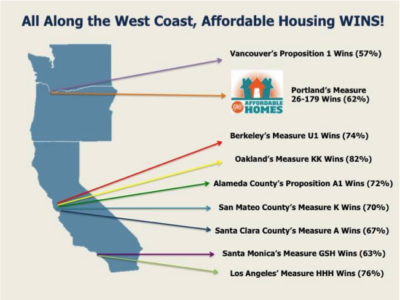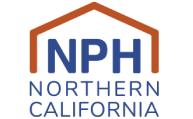New Analysis: Election Results from Around Nation on Affordable Housing
From Coast to Coast, Voters Rally Behind Affordable Housing Measures
With new numbers released from Santa Clara County Elections, the final tally from the 38 affordable housing measures from around the nation have been released today, based on data compiled by Center for Community Change.

Image via Welcome Home Coalition
Voters spanning seven states and 29 jurisdictions said YES to affordable housing measures, investing more than $4.4 billion into increasing affordable housing in communities across the country. Three affordable housing measures in the Bay Area led the way, in campaigns supported by NPH and NPH Action Fund. Measure A (Santa Clara County), Measure A1 (Alameda County), and Measure K (San Mateo County) will deliver more than $2 billion in new affordable housing around the Bay Area. (See NPH’s press release here.)
Of the 38 affordable housing ballot questions posed to voters this election cycle, more than 80% of the housing measures passed, most with YES votes counting in the 60s, 70s, and even 80%+. The numbers reveal a clear picture: Voters are united in their support for affordable housing.
These results track with polling data on voter attitudes towards affordable housing. Polling from Ipsos Public Affairs in July 2016 showed that voters are ready for action on affordable housing – with more than 3 out of every 4 voters more likely to support a candidate who made affordable housing a priority in government. Locally, polling conducted by EMC Research found that voters identified housing and homelessness as the most important problems facing their county.
“While voters may be divided on a number of issues facing this nation, affordable housing is not one of them. There is clear, consistent, and strong support for investments in affordable housing and leaders should take note,” said Amie Fishman, NPH Executive Director. “Affordable housing should be a top policy issue for all elected leaders, at every level of government moving forward.”
This post has been revised to reflect data updates from the Center for Community Change.


